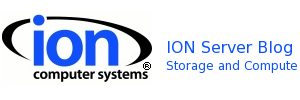ion SR-71mach6 adds Enthusiast-series Optane™ drive options
ion has added a new option to its SR-71mach6 SpeedServer™ Configurator to allow the selection of Intel® Optane™ SSDs from the 905P Enthusiast series. Compared to Intel’s Optane DC P4800X series, this family continues to deliver an Uncorrectable Bit Error Rate (UBER) of 1 sector per 10^17 bits read but the endurance drops from an astounding 60 full drive writes per day to only Continue reading ion SR-71mach6 adds Enthusiast-series Optane™ drive options
